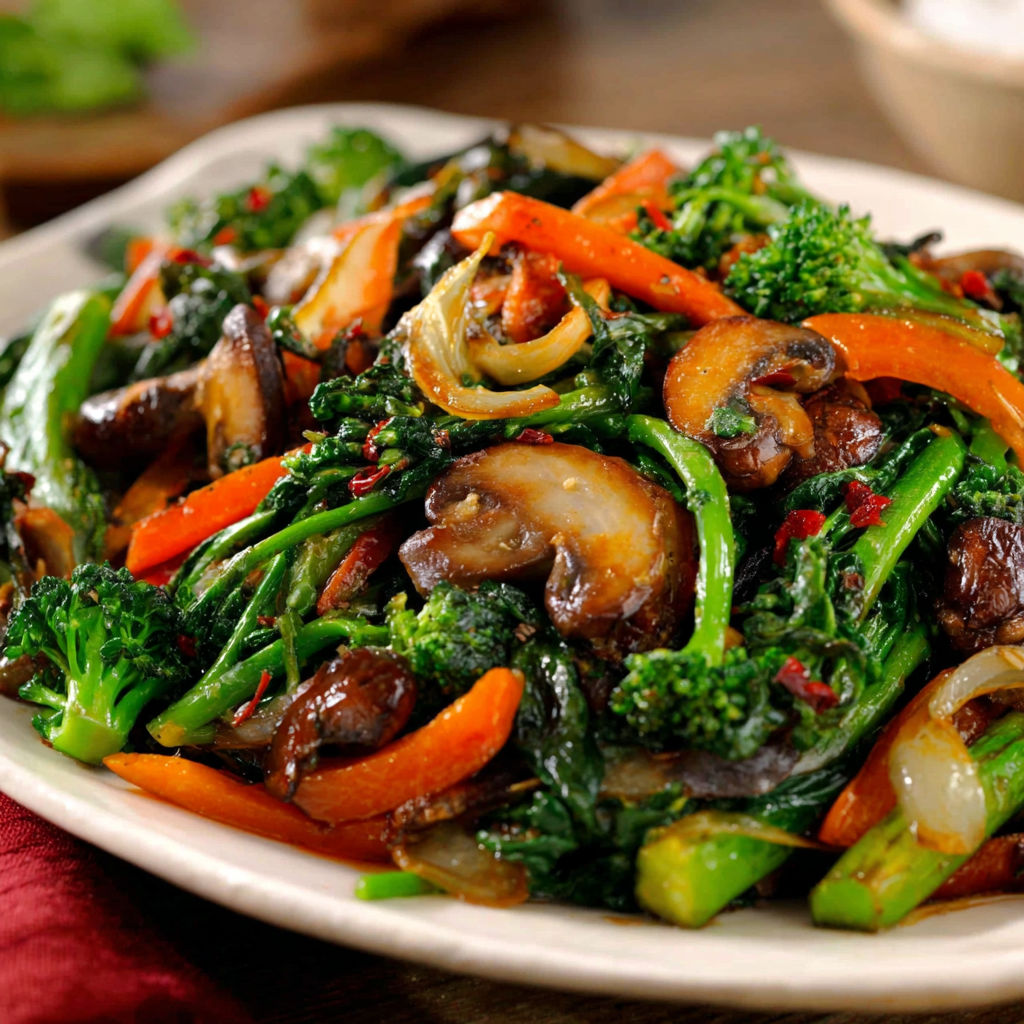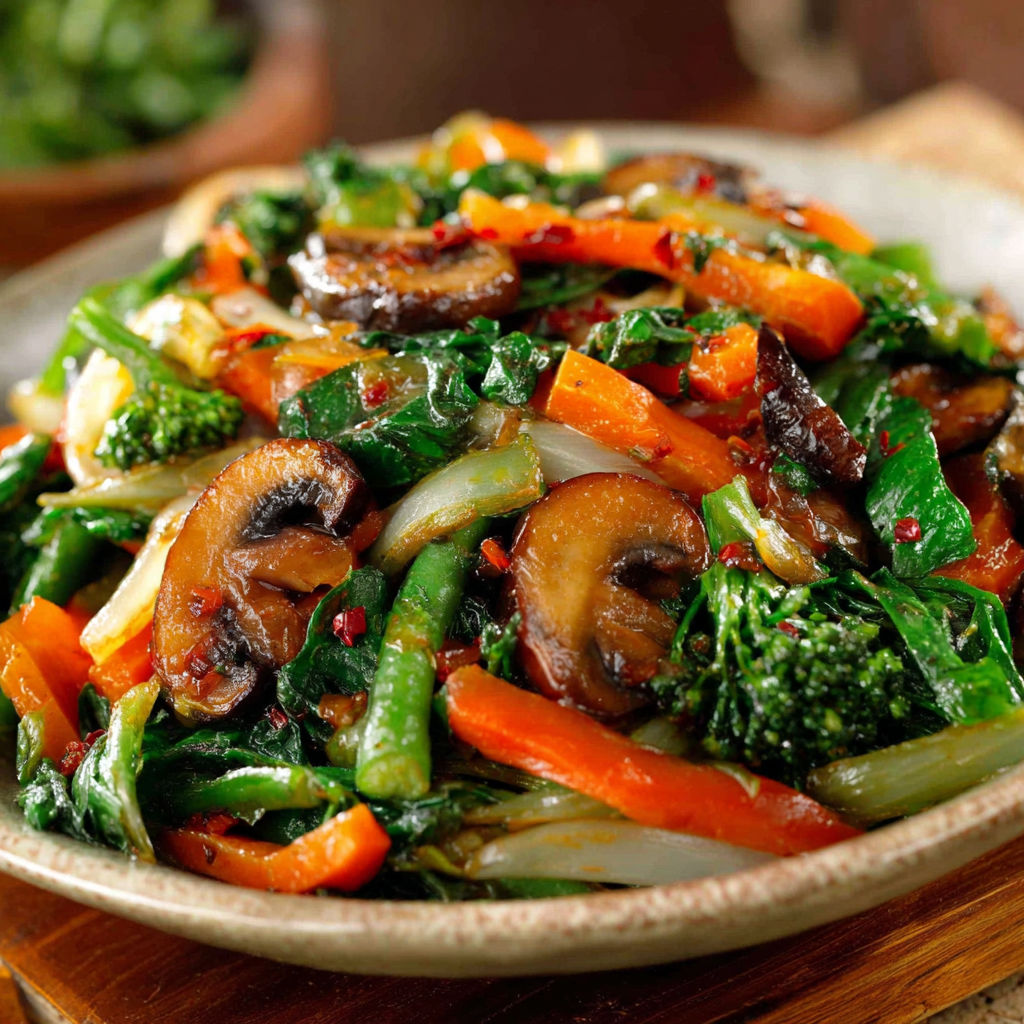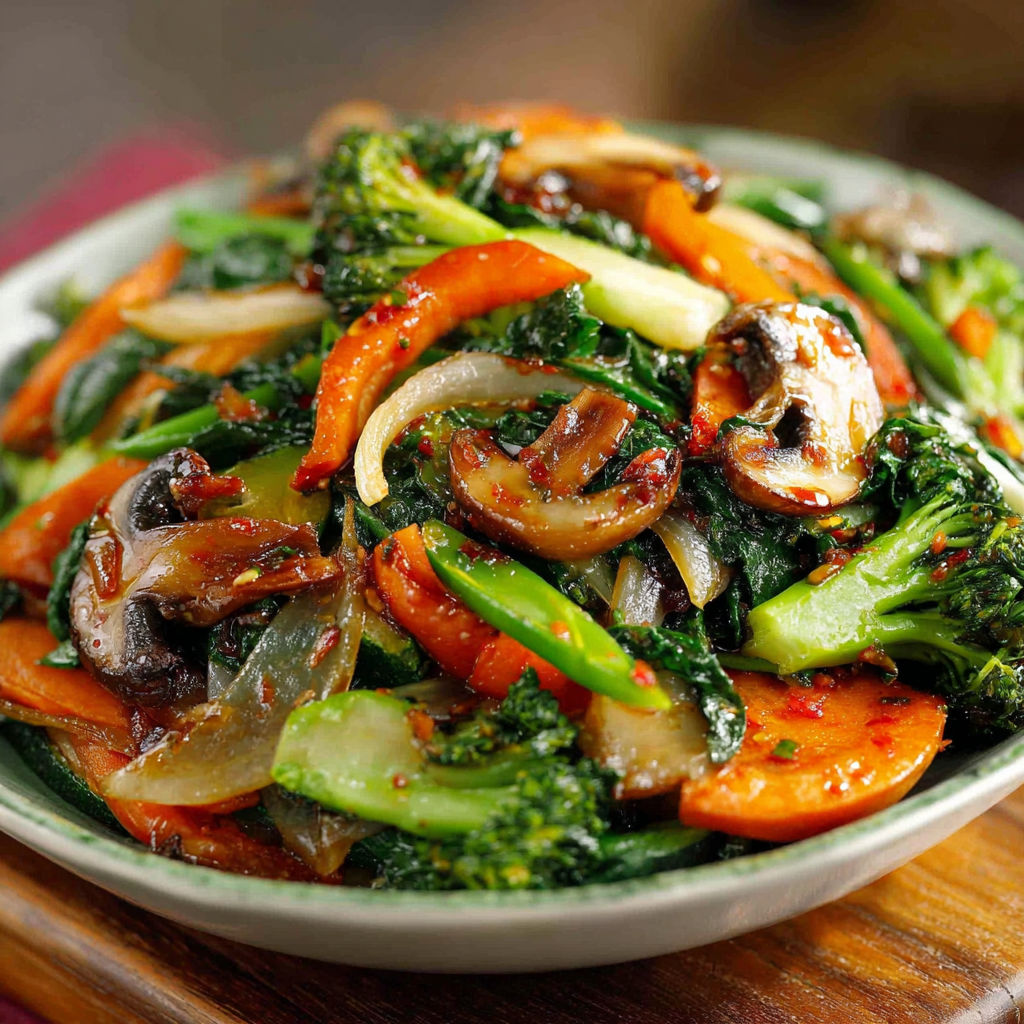 Save
Save
This Healthy Sautéed Vegetables recipe makes a vibrant and nourishing side dish that comes together quickly with fresh ingredients and simple seasonings. Whether you need a nutritious addition to weeknight dinner or a reliable meal prep option, this colorful mix satisfies with crunch and flavor in every bite.
I first made this on a weekday when I needed a nutritious side in a pinch. Now it’s a go-to for busy weeks and adds color to my family’s plates regularly.
Gather Your Ingredients
- Olive oil or avocado oil or butter: Two tablespoons for richness and to help vegetables sauté evenly
- Garlic: Two cloves minced to infuse the dish with savory aroma and depth
- Onion: One small thinly sliced for sweetness and a soft texture contrast
- Bell pepper: One sliced to bring bright color and a subtle crisp bite
- Zucchini: One sliced into half moons which cooks quickly and adds moisture
- Broccoli florets: One cup packed with nutrients and a bit of crunch
- Carrot: One medium julienned or thinly sliced for a slight sweetness and vibrant orange hue
- Snap peas: Half a cup which snap and pop with each bite adding freshness
- Mushrooms: Half a cup sliced to bring earthiness and meaty texture
- Salt and black pepper: To taste enhancing the vegetables’ natural flavors
- Lemon juice: One teaspoon optional to brighten and add a bit of fresh acidity
- Balsamic vinegar or soy sauce: One teaspoon optional for umami and complexity
- Optional toppings: Including toasted nuts seeds fresh herbs or grated Parmesan for added texture and flavor finishing points
How to Make It
- Prep Vegetables:
- Wash and cut all vegetables into uniform pieces This ensures even cooking
- Heat Pan:
- Place your skillet over medium-high heat and add the oil This step creates a hot surface needed to sauté efficiently
- Cook Aromatics:
- Add the minced garlic and sliced onions sauté for one to two minutes until fragrant This builds a savory flavor base
- Add Harder Vegetables:
- Now add carrots and broccoli cooking for three to four minutes stirring frequently This allows firmer vegetables to soften slightly
- Add Softer Vegetables:
- Toss in bell peppers zucchini mushrooms and snap peas sauté for another four to five minutes until vegetables become crisp-tender Stir often to cook evenly
- Season:
- Add salt black pepper and if desired lemon juice balsamic vinegar or soy sauce Stir well to incorporate all flavors
- Finish & Serve:
- Toss everything thoroughly and top with your favorite nuts seeds herbs or Parmesan Serve immediately to enjoy the best texture and freshness

One of my favorite parts is how the garlic and onions create a fragrant base that makes these simple vegetables feel so special. I remember serving this for a casual dinner and everyone kept reaching for more because the natural sweetness and textures balanced so well together.
Flavor Boosters
Storage Tips Store leftovers in an airtight container refrigerated for up to four days Reheat gently in a skillet to maintain the crisp-tender texture rather than using a microwave Chopping vegetables ahead speeds assembly but cook only when ready to eat for best freshness Ingredient Substitutions Swap broccoli with cauliflower or green beans for a different crunch profile Use kale or spinach in place of some peas or zucchini for more leafy greens If vegan and avoiding Parmesan try nutritional yeast or toasted seeds for a cheesy flavor
Serving Suggestions
Serve alongside grilled chicken fish or tofu to add color and nutrients to any meal Toss into cooked grains like quinoa or rice for a quick and healthy bowl Top with a fried egg for extra protein and richness making it suitable for a light main dish
Creative Twists
Cultural and Historical Context Sautéing vegetables is a technique found in many cuisines because it quickly cooks vegetables while preserving flavor and nutrition This method has roots in Mediterranean and Asian cooking traditions where quick stir-fry style preparations highlight fresh vegetables with simple seasoning Using olive oil and vinegar reflects Mediterranean influences while soy sauce options add an Asian fusion twist Seasonal Adaptations In spring add asparagus and peas for fresh, sweet notes In summer include fresh tomatoes or corn to enhance natural sweetness Fall and winter work well with root vegetables like parsnips or turnips added for heartiness

This recipe is quick healthy and versatile making it a perfect addition to your weekly meal rotation.
Recipe FAQs
- → What oil works best for sautéing these vegetables?
Olive oil is preferred for its flavor and health benefits, though avocado oil or butter provide excellent alternatives depending on taste.
- → How can I keep vegetables crisp yet cooked through?
Cook harder vegetables like carrots and broccoli first, then add softer ones like bell peppers and mushrooms to achieve a crisp-tender consistency.
- → Can I use frozen vegetables for this dish?
Yes, just thaw frozen vegetables beforehand and adjust cooking time slightly to avoid excess moisture.
- → What are some flavor enhancements for this sautéed vegetable mix?
Adding fresh herbs, a splash of lemon juice, balsamic vinegar, or soy sauce can enhance the natural flavors, while toasted nuts or seeds add texture.
- → How should leftovers be stored and reheated?
Keep leftovers in an airtight container in the refrigerator for up to 3–4 days and reheat quickly in a skillet over medium heat to maintain texture.
- → Is this dish suitable for meal prep?
Absolutely, vegetables can be chopped ahead and sautéed fresh when needed, making it a convenient, healthy option for busy schedules.
